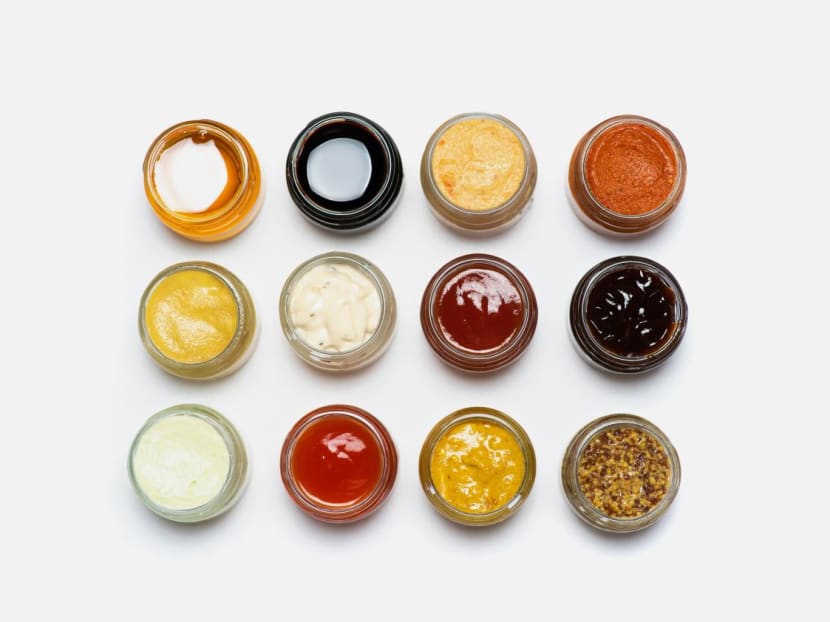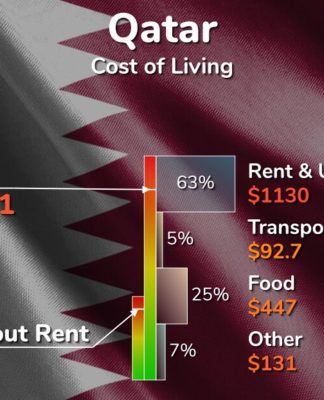How much salt are you consuming? Everyday foods you didn’t know were packed with sodium
Which Asian sauce or cheese is the saltiest? Can drinking lots of water after eating a bag of chips help? Read on for the answers to your salty questions.
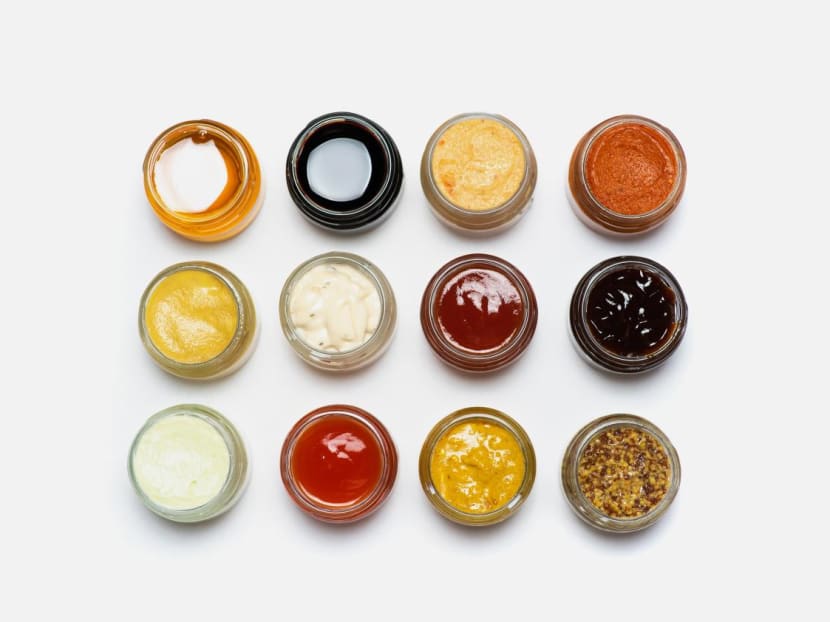
It’s no wonder that Singaporeans are “salty”. We are simply consuming too much sodium – an average of 3,600mg, or more than 1.5 teaspoon of salt a day, according to the Ministry of Health. And you know where all that salt will lead you: Down Hypertension Lane and onward to Cardiovascular Disease Central.
In urine samples used to assess sodium intake, it has been found that for every 1,000mg increase in the urine’s sodium content per day, there was an 18 per cent increased risk of cardiovascular disease, said Bibi Chia, the principal dietitian at Raffles Hospital’s Raffles Diabetes & Endocrine Centre.
That daily average of 3,600mg that Singaporeans consume? It is already 1,600mg over the recommended daily cap of 2,000mg.
It’s not only your cardiovascular system that is affected when you don’t pass the salt. Your immune system takes a beating, too. In fact, it has been suggested that a sodium-affected immune system could be the root cause behind high blood pressure, heart disease and stroke, according to Dr Brent Egan, an internist and the vice president of cardiovascular health at the American Medical Association.
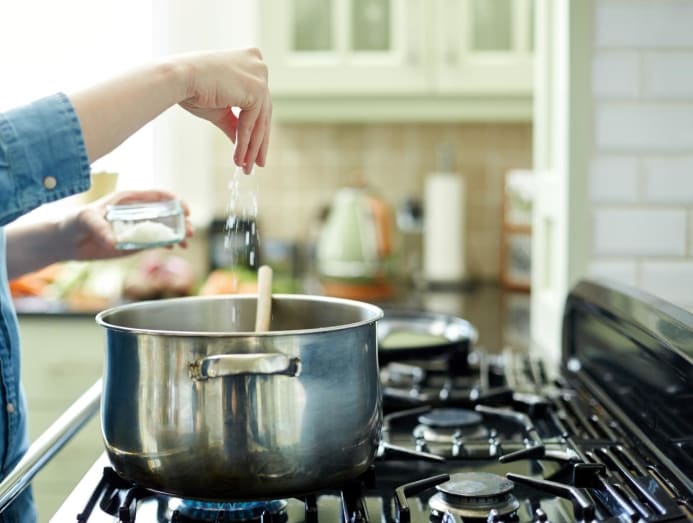
“Many of our cells in the body, including our immune system, have sodium channels,” he explained. “When we eat more salt, more of that sodium gets inside our cells and it affects our immune system,” he said.
That’s not all the health trouble that an excessive salt intake can land you in; you could also be increasing your risk of kidney disease, osteoporosis and stomach cancer, said Chia. If you already suffer from chronic kidney disease, “high sodium intakes of more than 4,600mg a day” can cause the disease to worsen, she said.
WILL DRINKING LOTS OF WATER CANCEL OUT A HIGH-SALT INTAKE?
You open a bag of salted egg yolk potato chips and settle down in front of the TV. Before you know it, the bag is empty and you are thirsty. At this point, you’re probably thinking: Drinking lots of water can’t be a bad idea. You’ve always been told to hydrate and the extra water would flush out the excess salt, right?
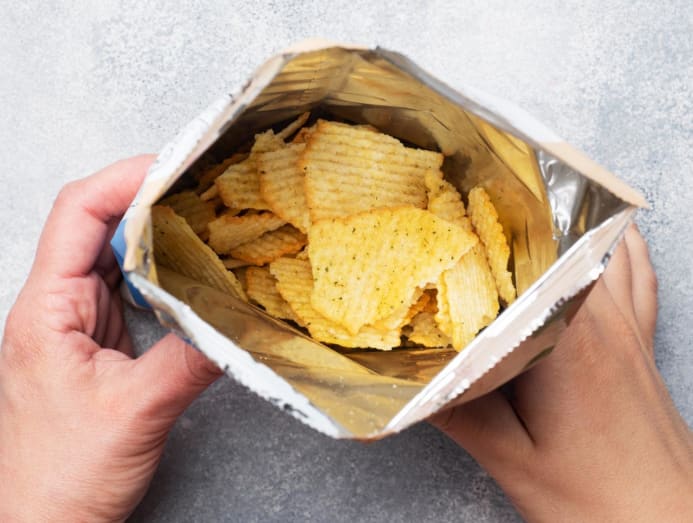
To some extent, yes, said Chia. “It is important to have sufficient water in our diet but having extra water does not mean that your kidneys will flush out all the excessive sodium eaten,” she said. Instead, the excess sodium retained in your blood will make your body hold on to even more fluid – and in turn, increase your blood pressure.
The next thing you might notice is the bloated, puffy feeling caused by the water retention. That’s because your kidneys are constantly striving to maintain a specific sodium-to-water ratio in your body, according to Healthline. When you’ve consumed extra sodium, your kidneys would naturally hold on to extra water to match the additional sodium – leading to a swollen belly, hands, feet and ankles.
ASIAN SAUCES AND THEIR SODIUM CONTENT
There’s a good reason why sauces enhance your homecooked dish’s flavours. They typically contain significant amounts of sodium. Here’s a rundown on just how salty your favourite Asian sauce is, according to dietitian Bibi Chia from Raffles Hospital:
| Sauce | Sodium (per tablespoon) |
| Black bean sauce | 1,120mg |
| Fish sauce | 1,010mg |
| Light soy sauce | 860mg |
| Low-sodium light soy sauce | 720mg |
| Dark soy sauce | 690mg |
| Teriyaki sauce | 690mg |
| Garlic chilli sauce | 650mg |
| Miso | 560mg |
| Oyster sauce | 540mg |
| Gojuchang | 375mg |
| Kecap manis | 330mg |
| Hoisin sauce | 260mg |
| XO sauce | 225mg |
| Sambal | 180mg |
So instead of a “water parade” after crunching through a bag of chips, you might be better off eating bananas, dried apricot or other potassium-rich food. Other than sodium, potassium is another nutrient known to play a role in maintaining your body’s fluid balance, according to Healthline.
Furthermore, research showed that for “every 1,000mg increase of potassium, there was an 18-per-cent lower risk of cardiovascular disease”, said Chia. As a gauge, a medium banana contains more than 400mg of potassium; half a cup of dried apricot has more than 750mg of potassium.
SPOT THE HIDDEN SODIUM
Some foods may appear wholesome but are wolves in low-sodium clothing. Here’s a look at some of these examples:
- Plant-based protein patty
- 370mg to 390mg of sodium per patty

“This should be limited to once a week. Plant-based protein patties can also be high in saturated fat,” said Jaclyn Reutens, a clinical and sports dietitian and the founder of Aptima Nutrition & Sports Consultants. If you’re vegetarian, you’re better off opting for natural foods such as beans, lentils, chickpeas, eggs, tofu, nuts and seeds, she said.
- Pink Himalayan salt
- 1,500mg to 1,940mg of sodium per tsp
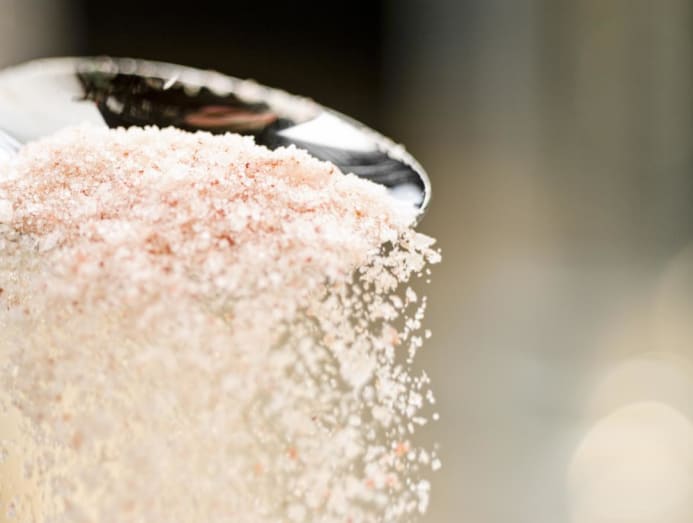
This expensive salt has always been regarded as healthier than regular salt. But is it really? It is mined from the Himalayas in Pakistan (hence, the name) and gets its colour from the up to 84 trace minerals found in it.
However, it is still largely sodium chloride (up to 98 per cent, according to Medical News Today) – the very stuff that regular salt is made of. In fact, the fancy salt contains just slightly less sodium chloride than the normal variety, so you should still use it judiciously, said Reutens.
- Ham sandwich
- 800mg of sodium per serving
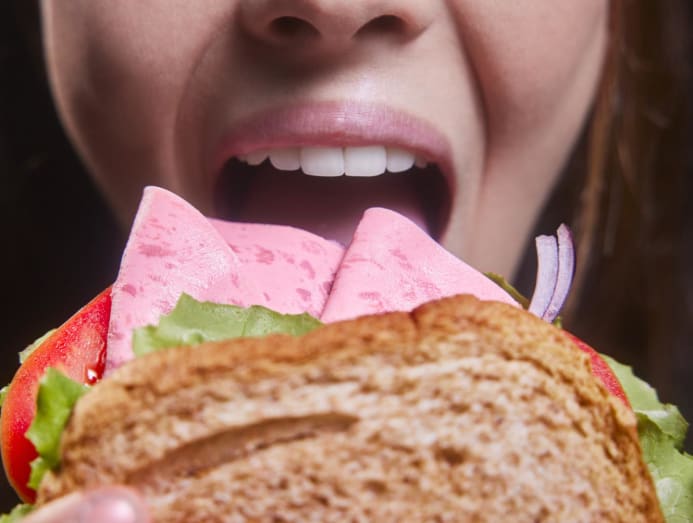
A ham sandwich might seem like a good choice at first glance. But ham is made by curing pork with salt and this process gives it a very high sodium content, said Reutens. The same goes for any salt-cured or processed meats such as bacon, salami, prosciutto, hot dog and luncheon meat.
It is a good idea to include potassium in the sandwich to counter the high-sodium effects by having it with lettuce, tomato and cucumber, she said.
- Smoked salmon
- 420mg to 700mg of sodium per 50g
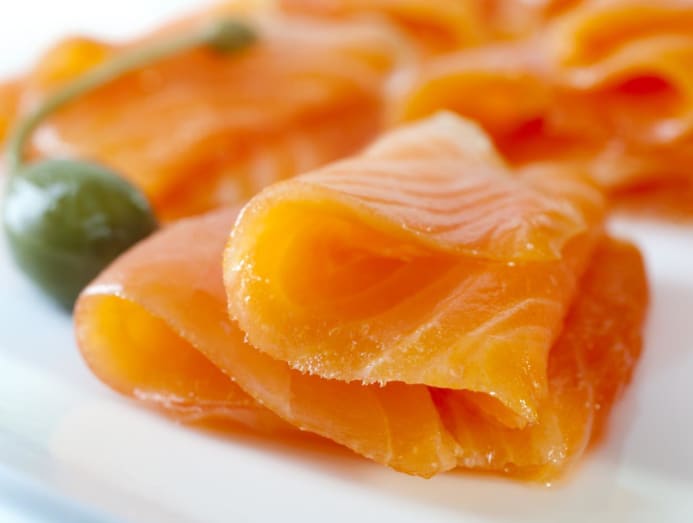
“One serving of smoked salmon is almost one-third of your daily limit, so it is high in sodium,” said Reutens. And that’s not even considering the brined capers many people usually eat it with. Limit smoked salmon to once a week.
Cheese (per 100g)
- Parmesan: 1,529mg
- Gouda: 819mg
- Brie: 629mg
- Cheddar cheese: 621mg
- Mozzarella: 16mg

As you can see, different cheeses have different sodium content. “You can eat low-fat cheese daily as it is high in protein and calcium,” said Reutens. Just read the food labels carefully and pick the one with a lower sodium content, she advised.
- Cereal
- 150mg to 220mg of sodium per serving
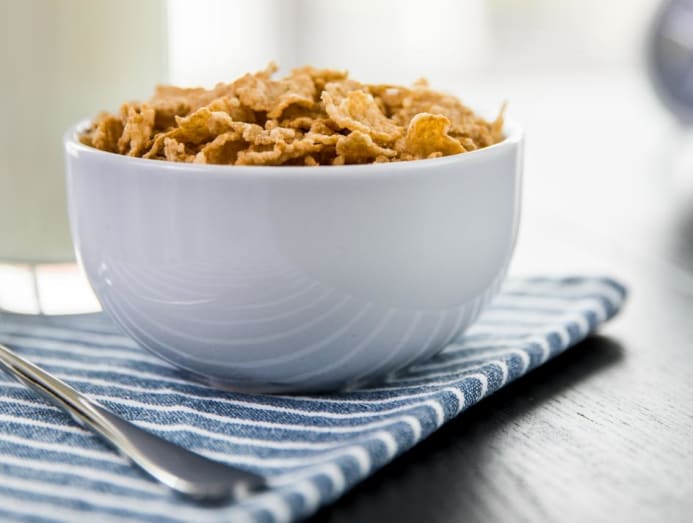
Breakfast cereals are generally high in sugar but did you know they may contain quite a bit of sodium as well? If you eat cereal several times a day regularly because you can’t be bothered to cook or order in, choose one that is lower in sodium. But generally, cereal can be eaten daily, said Reutens.
- Pasta sauce
- 314mg to 566mg of sodium per serving
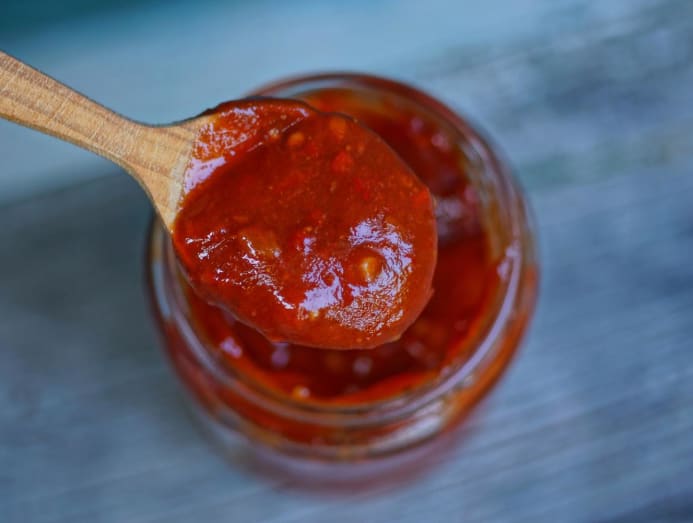
Depending on the brand and sauce type (tomato, cream or pesto), the sodium level of store-bought pasta sauces can vary widely. Try to look for low-sodium alternatives if you can, said Reutens. If you’re still at a loss, consider the saturated fat content, too. A tomato-based sauce is generally better as it contains less saturated fat, she said.
HOW TO CUT DOWN ON SALT
Avoiding processed foods, frozen meals and anything canned would help a lot in reducing your sodium intake. Take a can of chicken noodle soup, for instance. Just one 305g tin can contain over 2,000mg of sodium, which is basically your entire day’s allowance. A single slice of frozen pizza may have up to 750mg of sodium – and nobody stops at just one slice.
Speaking of serving size, it pays to read the nutrition label carefully. For example, the frozen chicken nuggets you pick up may read 480mg of sodium per serving on the packaging. But if you look carefully, a serving could refer to just four pieces.
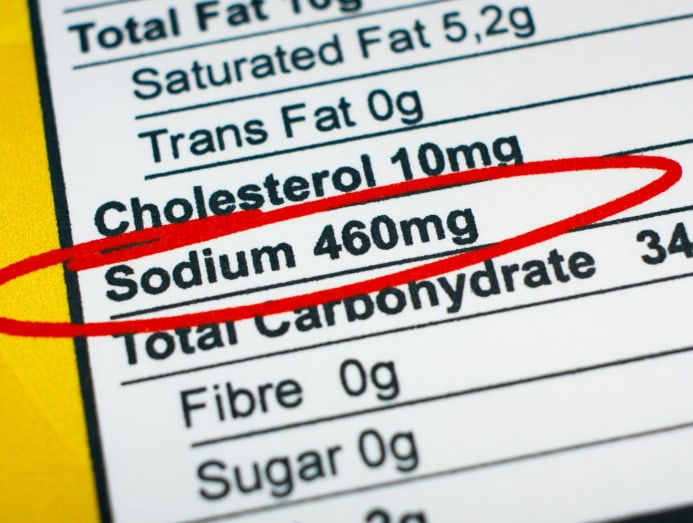
Another tip is to opt for foods labelled as “low sodium”. For any item to earn that label, it should “contain less than or the equal of 120mg sodium per 100g”, said Reutens.
When cooking, try to use less salt and pre-made sauces. Instead, use natural herbs and spices such as ginger, coriander, parsley, mushrooms, celery, tomato, vinegar, pepper, chilli, mandarin peel, cloves, cinnamon and star anise instead of salt, suggested Chia. “Gradually cut down on your sodium use and your taste buds will adapt to less salty foods.”
Magdalin Cheong from Changi General Hospital’s Department of Dietetic and Food Services has these tips when dining out on the Health Xchange website:
- Ask for less or no gravy.
- Opt for less or no salt or sauces added during cooking.
- Skip the soup when having soupy dishes.
- Limit sauces and avoid adding extra salt at the table.
- Choose plain rice instead of flavoured rice.














